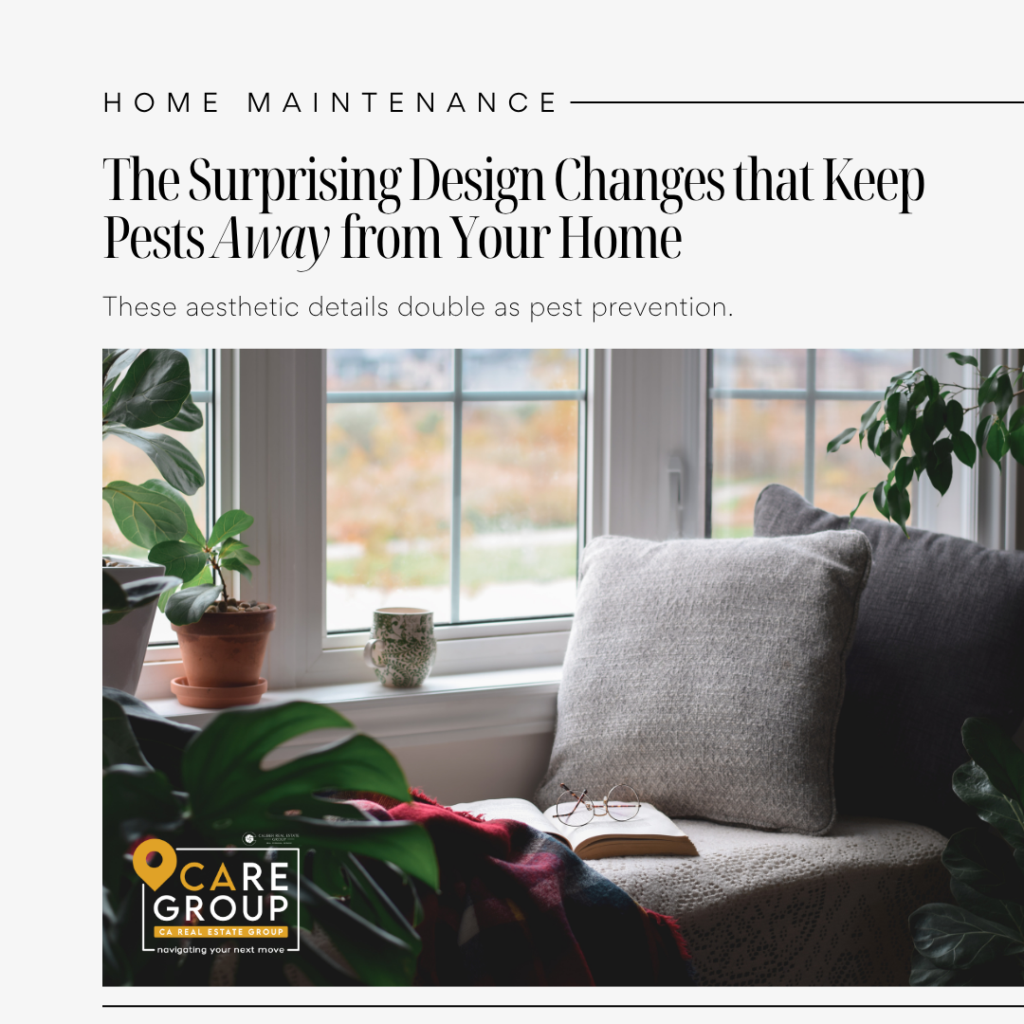Key Points
- Smart design choices can enhance your home’s style while effectively keeping bugs and pests at bay.
- Stylish home upgrades—such as warm lighting, door sweeps, and window repairs—can also keep bugs and critters outside.
- Hidden pest-proofing tricks, such as sealing cracks and using trim or baseboards, can stop bugs without compromising your home’s appearance.
From a marching parade of ants to hovering fruit flies, pests can really put a damper on things. They don’t have to be a fact of life for your house, though. Along with keeping a clean home and sealing points of entry, there are smart ways to repel bugs that blend home aesthetics with pest control techniques.
- Paigh Bumgarner, senior product manager for Cornerstone Building Brands
- Adham Perriseau, licensed pest management professional at Dr. Killigan’s
- Lou Manfredini, home expert at Ace Hardware
- Jim Fredericks, MD, board-certified entomologist at the National Pest Management Association
- Roy Neely, professional handyperson for Frontdoor
01 of 08 | Upgrade Your Screens and Windows
Windows are your home’s first line of defense against both weather and pests. “Flaws in window design or installation can create air leaks, attracting pests and their predators,” explains Paigh Bumgarner, senior product manager for Cornerstone Building Brands.
If your screens or windows are past their prime, it’s time for an upgrade. She says to look for lab-tested windows with fusion-welded corners and durable weatherstripping.
02 of 08 | Use Architectural Trim to Disguise Sealing Work
Sealing entry points—thus, blocking small gaps that pests use to enter—is a must. But you don’t have to be stuck looking at eyesore sealants. “Many bugs can squeeze through tiny cracks, so closing these with the right materials makes a big difference,” says Adham Perriseau, licensed pest management professional at Dr. Killigan’s. Rather than leaving behind visible caulk or foam, conceal these fixes with decorative trim, baseboards, or facade details.
03 of 08 | Replace Bright Exterior Lights
Bright white light bulbs notoriously attract bugs while warm-toned options (including LEDs) are less likely to create a buggy bonanza. Swap in warm lighting for light fixtures on your doorstep, entryway, garage, and other entry points. You can also choose solar-powered or motion-sensor versions for patios and gardens to limit continuous light and keep your ambiance cozy.
04 of 08 | Add Stylist Door Sweeps
Along with sealing gaps with caulk (for small gaps) or foam (for larger gaps), Perriseau recommends using weather stripping and door sweeps to create barriers around windows and doors.
An ultra-low-profile door sweep in a finish that matches your threshold or flooring—like brushed brass or matte black—looks good while telling pests, “you’re not welcome here.”
05 of 08 | Swap in Hard Flooring
Carpet has a nice feel under your feet, but it tends to harbor crumbs, dust, moisture, and pet dander. This not only affects your indoor air quality, but can also attract bugs, dust mites, carpet beetles, and other insects.
Ace Hardware’s home expert, Lou Manfredini, recommends prioritizing hardwood flooring, which is easier to clean and lasts for decades. For a less expensive option, you can also use luxury plank or tile. Rugs can be incorporated for that soft underfoot feel, but be sure to deep clean them seasonally.
06 of 08 | Keep a Clean Border Around Your Home
What’s happening on the exterior of your home (especially right against your walls) has a huge impact on critter activity on the inside. “When you place mulch or other vegetation right next to your house, you are creating ideal conditions for pests to flourish, right next to the building,” explains Jim Fredericks, MD, a board-certified entomologist. Trim back tree branches and don’t store firewood close to the home.
07 of 08 | Don’t Overwater Indoor Plants
Houseplants are a lovely addition to the household, but they can also attract gnats and ants if they are waterlogged. Opt for planters with built-in drainage trays, avoid clustering too many in dark corners, and display them on elevated plant stands to keep excess moisture off shelves and floors. Grouping plants in balanced arrangements (versus crowded clusters) can also help improve airflow to reduce excess soil moisture.
08 of 08 | Regularly Refresh Your Gutters
Gutters aren’t exactly a glamorous detail to think about, but they are integral when it comes to a pest-free home. Professional handyperson Roy Neely says to give your gutters a thorough inspection to ensure they’re clean and draining properly. If anything’s amiss, it’s time for an overhaul.
“Ensuring proper drainage design—which can include French drains, gutters, and downspout extensions—can dramatically reduce pest pressure around the home,” Neely explains. “In addition, incorporating a gravel perimeter trench around the foundation (also known as a dry moat) can help discourage burrowing pests like moles and insects by creating a dry buffer zone.”

